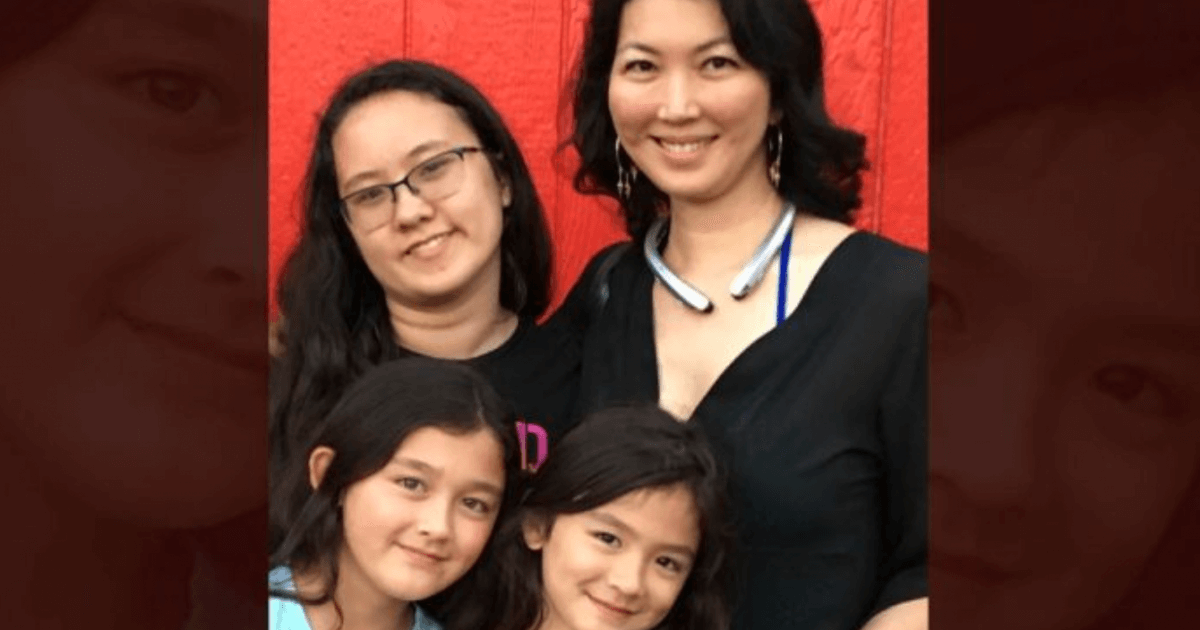A Mother's Fight
- The former top pool player in the world, Jeanette Lee, 49, has been diagnosed with terminal ovarian cancer. The single mother says she will do whatever she can to fight this disease for her three daughters: Cheyenne, 16, Chloe, 11, and Savannah, 10.
- Lee, has had a lifetime of debilitating pain from various conditions like scoliosis (a sideways curvature of the spine), and she’s endured over 20 major surgeries … which has knocked her down along the way, but it hasn’t kept ‘The Black Widow’ away from her beloved sport of pool. “I always say you don’t have to feel strong to be strong.”
- There is a newer class of drug called PRAP inhibitors that offer hope for treating women with ovarian cancer. These drugswhich help prevent cancer cells from repairing their damaged DNA (genetic material), causing them to die offwork best in women who have a genetic mutation called BRCA.
Related: Can You Survive a Stage 4 Cancer Diagnosis? An Experts Weighs In
Read MoreJeanette Lee Legacy Fund https://t.co/OUXkCMsHjU
Tony Stewart (@TonyStewart) February 18, 2021
And apparently, Lee also has a sense of humor. She joked on her Instagram page that there’s nothing better than “breaking balls,” she writes with an “LOL.” Seemingly a double entendre (double meaning) for frequently crushing male opponents, which metaphorically crushes their you-know-whats.
View this post on Instagram
A Life of Debilitating Pain
The Korean-American, who was born in Brooklyn, made Tampa, Fla. her home in 2015, where she has been running the APA League. This is not the first time that Lee has been knocked down. Lee has suffered through over 20 major surgeries, fibromyalgia (a disorder causing skeletal pain throughout the whole body), scoliosis (a sideways curvature of the spine), and many more issues throughout her career. “I was getting stabbing pains,” said Lee to local Tampa news FOX 13 in 2020. “I handled it because I didn’t know how to quit … I had to play pool.” She fought debilitating pain throughout most of her career. Then she had a spinal cord stimulation surgery, which worked temporarily until a staph infection led to a reversal of the spinal cord stimulation.
“I’m still going through [coming to terms with my career being over] and it’s terrifying,” Lee said. “If you can just keep your chin up, there’s greater things in store for you.” Lee had also shared some inspiring words for others going through a hard time during the pandemic. “I always say you don’t have to feel strong to be strong.”
Hope for Treating Ovarian Cancer
There have been some amazing developments in medicine over recent years with PARP inhibitors, which can help treat ovarian cancer. These drugswhich help prevent cancer cells from repairing their damaged DNA (genetic material), causing them to die offwork best in women who have a genetic mutation called BRCA.
Dr. Lynn Parker from Norton Cancer Institute talks to SurvivorNet about the pros and cons in using this drug. "PARP inhibitors are expensive, but there are ways to access those medications." Dr. Parker says, although there are ways for doctors to help their patients with accessing more affordable options. “Like with any medication, they have potential toxicities or side effects. So I think that as a patient being aware of what is possible is important."
Related: What Women Need to Know About PARP Inhibitors
Dr. Parker explains that some women will be able to handle side effects better than other, but says “there are different doses that can be utilized and looking at the timing of when you're using it … if you've just completed chemotherapy, you may be more fatigued or weak than you would [normally] be in a few months." She typically gives patients a lower dose of PARPs for the first few months after chemotherapy and then works them up to a higher dose, but it depends on the patient’s individual situation. It is best that women discuss these treatment options with their own doctors.
PARP Inhibitors for Ovarian Cancer Treatment: Weighing Risks and Benefits
Common PARP Side Effects and What to Expect
“Fatigue is very common,” says Dr. David Engle from Baptist Medical Group to SurvivorNet. “GI upset, whether it be nausea, indigestion, poor appetite, diarrhea, all very, very common, and perhaps nausea is one of the most common side effects that we see for many of these drugs.”
Related: Managing Side Effects During PARP Inhibitor Treatment
Fortunately, many of these side effects will decrease or even go away over time. “Sometimes over a month’s time, if we can help the patient either with medication to prevent their nausea or if they’re able to tolerate the fatigue, many times, these symptoms will resolve over four to six weeks of treatment. The body just kind of gets used to this as the new normal, and those symptoms will start to abate.”
One of the more serious side affects is anemia, or lower blood cell counts, and it can also affect our platelets. Just like in chemotherapy treatment, “these are lab tests that we frequently draw every week for the first month the patient is placed on these medications, looking to make sure that they are not becoming anemic or their platelets are not becoming too low. If they can maintain these markers of your blood levels for the first month, then oftentimes we’ll go to month-to-month evaluations on those.”
How to Manage PARP Inhibitor Side Effects
Learn more about SurvivorNet's rigorous medical review process.


